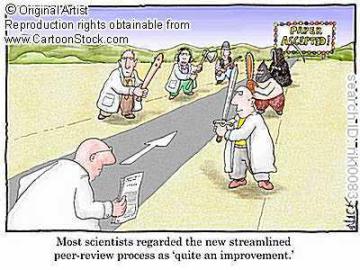In an age of self publishing – including blogs, videos, and other Web-based media – why do we still seek to publish in traditional academic peer-reviewed journals? Vanity.
ResearchImpact-York published two academic papers in 2009. In 2010 we had one in press, two submitted, and one just rejected for a second time, from the same journal. Since our first post on May 30, 2008, ResearchImpact has published 206 blogs on Mobilize This!, an average of 6 or 7 each month.
Here’s a comparison of blogging and peer-reviewed publishing:
 TIME: I started drafting our paper on ResearchSnapshot clear language summaries in July 2009. I submitted with revisions in September. It just got rejected. I can write a blog in about one hour and get it posted in 20 minutes.
TIME: I started drafting our paper on ResearchSnapshot clear language summaries in July 2009. I submitted with revisions in September. It just got rejected. I can write a blog in about one hour and get it posted in 20 minutes.
ACCESS: We published our first paper on York’s KMb Unit in Evidence & Policy [Phipps, D.J. and Shapson, S. 2009. Knowledge mobilisation builds local research collaboration for social innovation. Evidence & Policy. 5(3): 211-227]. I have no idea who, apart from my mother, has read this paper. Mobilize This! has received 55,171 page views as of December 28, 2010 and has a subscriber list of over 1200. Blogs are accessible to anyone with an internet connection. Except for Open Access journals, most journals limit access to those who can afford a subscription.
RESPONSIVENESS: Blogging also has the added feature of allowing readers to respond by leaving comments. Try the comment feature below to leave your thoughts and let everyone know what you’re thinking. Now, try to do the same with a peer-reviewed paper you’ve printed out.
PAYBACK: I am not an academic. Unlike scholars seeing tenure and promotion based on their publications, my publications do not have an impact on how my performance is measured.
If it takes less time to reach more people in a two-way fashion, why do I take the trouble to publish in peer-reviewed journals if it doesn’t benefit me in any way?
Peer review provides a level of quality control; however, so does blogging. If you don’t find our writing valuable you won’t return to this blog or you’ll tell us so. And even though I believe peer-reviewed publishing and blogging are complementary, both take time. So why do we continue to take the time to pursue both forms of dissemination when blogging seems to meet our needs?
 In practical terms, publishing in peer-reviewed journals gives us credibility in the eyes of one of our key constituents: faculty. Faculty’s currency is peer review. We gain credibility when faculty peers approve our work and find it worthy of publication. But the real truth is, publishing in peer-reviewed journals provides a sense of personal satisfaction that boarders on vanity. I enjoy the sense of satisfaction when faculty peers (finally) approve our publications. At the end of the day my ego is stroked when our work is accepted for peer-reviewed publication as well as when I receive comments on Mobilize This! Together, these two forms allow you, the KMb stakeholder, to know that our work is not only immediate, accessible and engaging (thank you, blogging!) but it also has the peer reviewed seal of approval (even if the seal is delayed by 12-18 months).
In practical terms, publishing in peer-reviewed journals gives us credibility in the eyes of one of our key constituents: faculty. Faculty’s currency is peer review. We gain credibility when faculty peers approve our work and find it worthy of publication. But the real truth is, publishing in peer-reviewed journals provides a sense of personal satisfaction that boarders on vanity. I enjoy the sense of satisfaction when faculty peers (finally) approve our publications. At the end of the day my ego is stroked when our work is accepted for peer-reviewed publication as well as when I receive comments on Mobilize This! Together, these two forms allow you, the KMb stakeholder, to know that our work is not only immediate, accessible and engaging (thank you, blogging!) but it also has the peer reviewed seal of approval (even if the seal is delayed by 12-18 months).
As Web 2.0 and open access move into the academy I predict we will increasingly see a blend of peer-reviewed and online media. To get to there from here all we need to do is change tenure and promotion, peer review, and the academic publishing industry. I’ll get right on that….after my next blog…
ResearchImpact is a service-oriented program designed to connect university research with research users across Canada to ensure that research helps to inform decision-making. This article was originally published in ResearchImpact's blog, Mobilize This!.

